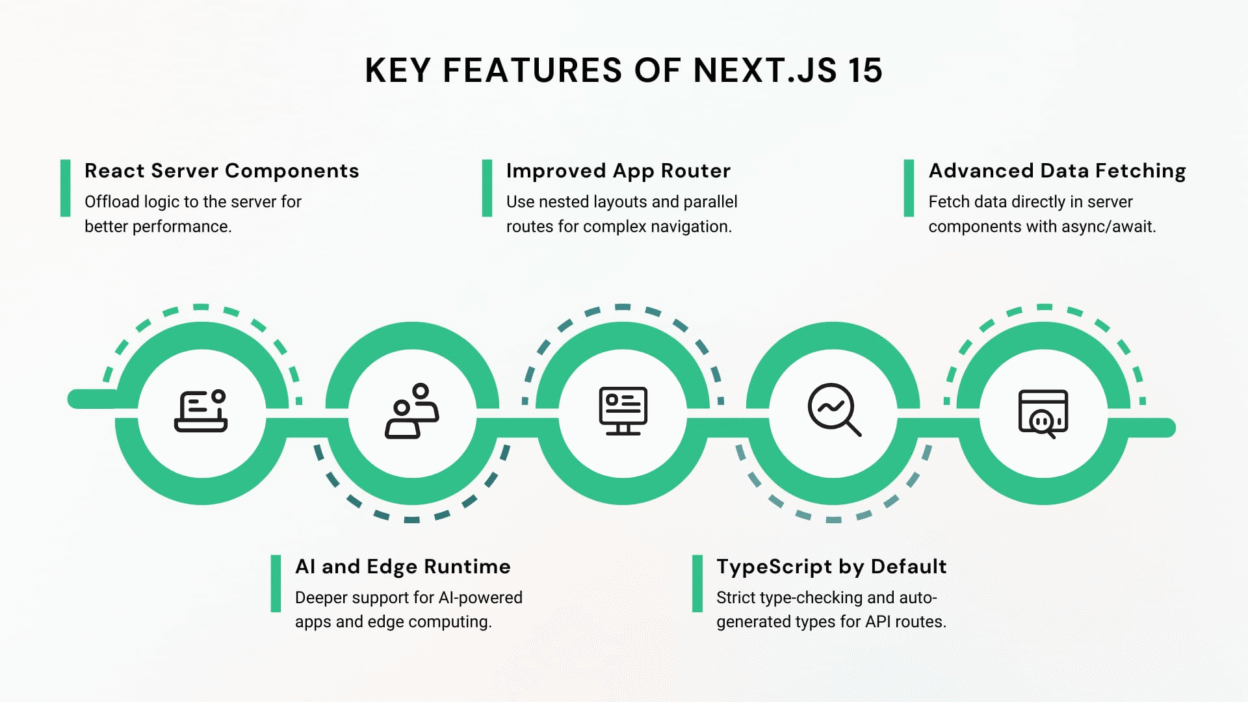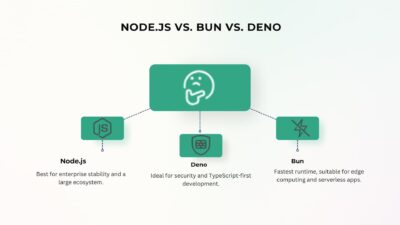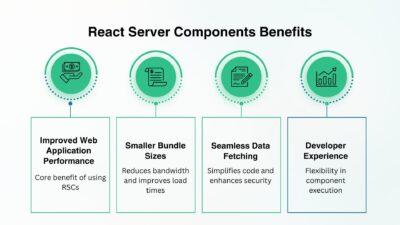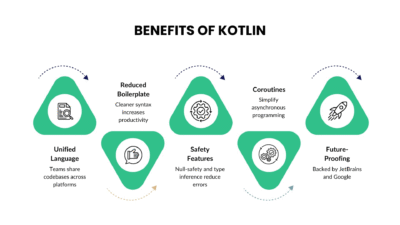The React ecosystem continues to evolve at a rapid pace, and with each release of Next.js, the framework pushes the boundaries of what full-stack JavaScript applications can achieve.
Next.js 15 is more than just an incremental update—it marks a shift toward faster, more scalable, and developer-friendly full-stack solutions. From React Server Components (RSC) to advanced data-fetching strategies and seamless backend integrations, Next.js 15 is setting new standards for building production-grade web applications.
In this article, we’ll dive deep into the core improvements of Next.js 15, how it transforms full-stack React app development, and what this means for developers and businesses.
Why Next.js Matters in Full-Stack Development
For years, React has been the most popular frontend framework, but handling server-side rendering, API integrations, and performance optimizations often required extra tooling. Next.js bridges this gap by offering:
- Server-Side Rendering (SSR) and Static Site Generation (SSG) out of the box.
- Full-stack capabilities with API routes and server components.
- Scalable architecture for enterprise-grade applications.
- Seamless developer experience (DX) with built-in routing, optimizations, and conventions.
Key Features of Next.js 15

1. React Server Components (RSC) at Scale
Next.js 15 enhances its integration with React Server Components, enabling developers to offload complex logic to the server while delivering lightweight components to the client. This results in:
- Reduced bundle sizes
- Faster client-side performance
- Better SEO through server-rendered pages
2. Improved App Router and File-Based Routing
The App Router introduced in earlier versions has matured in Next.js 15. Developers can now:
- Use nested layouts for improved UI composition.
- Leverage parallel routes for complex navigation patterns.
- Simplify project structure with a more intuitive file-based routing system.
3. Advanced Data Fetching Strategies
One of the most impactful improvements in Next.js 15 is enhanced data fetching with async/await, streaming, and caching. Developers can:
- Fetch data directly in server components without API overhead.
- Use React Suspense to stream UI updates progressively.
- Optimize caching policies for improved scalability.
4. Built-in AI and Edge Runtime Support
With the rise of AI-powered apps and edge computing, Next.js 15 comes with deeper support for:
- Edge runtimes on platforms like Vercel Edge Functions and Cloudflare Workers.
- AI/ML integrations for personalization, search, and recommendations.
- Optimized inference handling via serverless architecture.
5. TypeScript by Default
Next.js 15 continues to make TypeScript a first-class citizen. With strict type-checking, auto-generated types for API routes, and improved DX, teams can confidently scale applications without sacrificing maintainability.
Performance Enhancements in Next.js 15
Hybrid Rendering Model
Next.js 15 supports hybrid rendering, allowing developers to combine SSR, SSG, and ISR (Incremental Static Regeneration) in the same application. This flexibility enables:
- Faster build times
- Real-time content updates
- Optimal performance for both static and dynamic content
Automatic Code Splitting
The framework automatically splits code by route, ensuring that only the necessary JavaScript is loaded. This reduces Time to Interactive (TTI) and improves Lighthouse scores.
Enhanced Image & Font Optimization
Next.js 15 further improves on the Image Optimization API with support for modern formats like AVIF and WebP, while also making font optimization seamless through Google Fonts and custom configurations.
Business Impact of Next.js 15
For organizations, adopting Next.js 15 means:
- Reduced development costs – thanks to fewer dependencies and built-in full-stack features.
- Better SEO performance – due to optimized SSR and RSC.
- Faster time-to-market – with preconfigured performance and deployment optimizations.
- Future-proof architecture – leveraging edge computing, AI, and modern rendering strategies.
Full-Stack Development with Next.js 15
API Routes and Backend Integration
Next.js 15 strengthens its API routes, allowing developers to build lightweight backend endpoints directly within the framework. Combined with server components, this creates a true full-stack experience—no need for a separate backend unless required for scaling.
Database and ORM Support
- Direct support for ORMs like Prisma
- Integration with PostgreSQL, MongoDB, and MySQL
- Native handling of environment variables for secure configuration
Next.js 15 vs. Competing Frameworks
| Feature | Next.js 15 | Remix | SvelteKit | Nuxt 3 |
| React Server Components | ✅ Yes | ❌ No | ❌ No | ❌ No |
| File-Based Routing | ✅ Yes | ✅ Yes | ✅ Yes | ✅ Yes |
| Edge Runtime Support | ✅ Advanced | ✅ Basic | ✅ Basic | ✅ Basic |
| Hybrid Rendering | ✅ Yes | ❌ No | ✅ Partial | ✅ Yes |
| Enterprise Adoption | ✅ High | Medium | Growing | Medium |
Future of Full-Stack React Apps with Next.js
Looking ahead, Next.js will continue to shape the future of full-stack React development by:
- Expanding AI integrations for intelligent apps.
- Strengthening edge computing for globally distributed systems.
- Deeper Vercel integration for seamless deployment and CI/CD pipelines.
- Simplified DevX with even less boilerplate.
Final Words
Next.js 15 is not just another upgrade—it’s a turning point in full-stack React development. By combining React Server Components, advanced data fetching, hybrid rendering, and edge runtime support, it empowers developers to build applications that are faster, smarter, and more scalable than ever before.
For businesses, adopting Next.js 15 means gaining a competitive edge in SEO, performance, and time-to-market—while future-proofing their digital infrastructure. The future of full-stack React applications is here, and it’s being written with Next.js 15.




